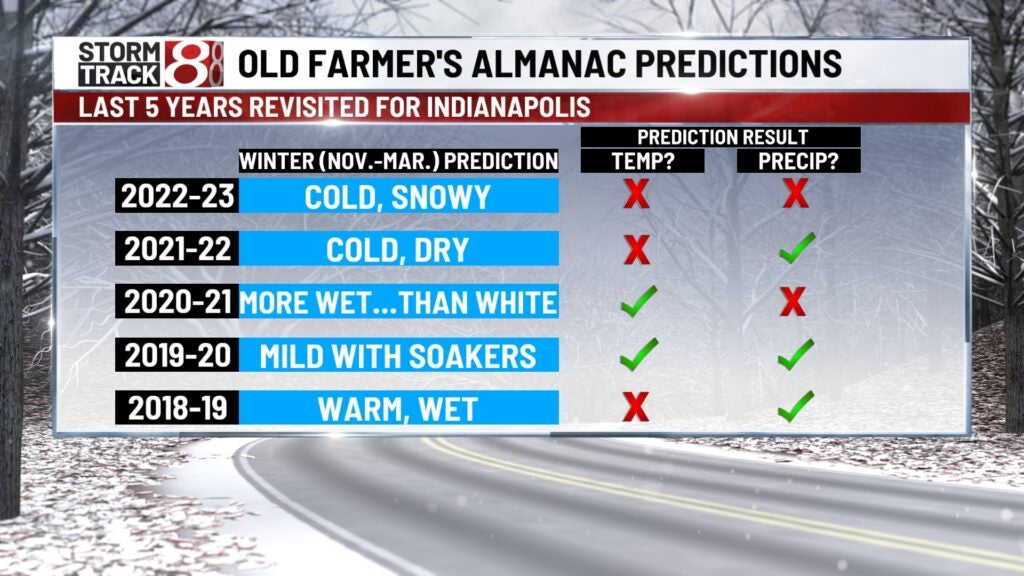Old Farmer’s Almanac calls for ‘cold, snowy’ Indiana winter; can we trust its forecast?
INDIANAPOLIS (WISH) — It is back!
The Old Farmer’s Almanac has released its 2023-2024 winter forecast. In its outlook, it is calling for Indiana to have a “cold, snowy” winter.

Indiana is not alone; a good chunk of the United States is forecasted to have a cold and snowy winter.
Meteorological winter is from December to the end of February. However, the Old Farmer’s Almanac has its winter outlook include from November to the end of March. They boast an 80% accuracy rating with their long-term forecasts, but does that line up recently with central Indiana winters?
How accurate have previous outlooks been?
In the past five years, the Old Farmer’s Almanac has been no better than a coin flip in central Indiana.
Last winter, 2022-23, the “cold, snowy” prediction was identical to this winter’s new prediction. That did not work out well last winter with the almanac incorrect in both temperature and precipitation.
Each of the last five winters has featured below-normal snowfall in Indianapolis. Four of the last five winters have had above-average temperatures.


How does it compare to its rival?
Compared to its counterpart, the Farmers’ Almanac, the Old Farmer’s Almanac’s outlook has done better in Indianapolis.
In the Farmers’ Almanac winter forecast, they are looking at the months from December to March. Its forecasting has been abysmal for the winter season. The Farmers’ Almanac has gotten both temperature and snowfall wrong each of the last four years in Indianapolis.


Obviously, these outlooks are fun to look at for some people, but the performance with either almanac has not been there in the last few years. We will see if this changes in the 2023-2024 winter season.
Be sure to stay tuned for a more reliable winter forecast from the National Oceanic and Atmospheric Administration, which typically comes out in October or November.
